by Eric Meier
When attempting to identify a wood sample, it’s important to keep in mind the limitations and obstacles that are present in our task. Before starting, please have a look at The Truth Behind Wood Identification to approach the task in a proper mindset; I consider the linked article to be required reading for all those visiting my site with the intent of identifying wood.
1. Confirm it is actually solid wood.
Before proceeding too much farther into the remaining steps, it’s first necessary to confirm that the material in question is actually a solid piece of wood, and not a man-made composite or piece of plastic made to imitate wood.
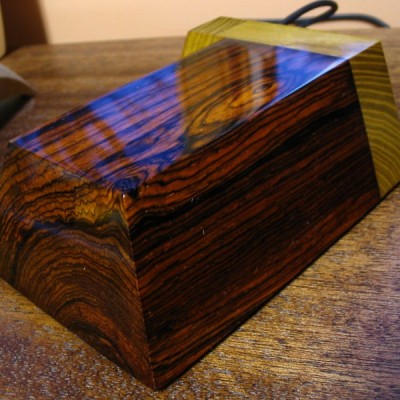
Can you see the end-grain?
Manufactured wood such as MDF, OSB, and particleboard all have a distinct look that is—in nearly all cases—easily distinguishable from the endgrain of real wood. Look for growth rings—formed by the yearly growth of a tree—which will be a dead-giveaway that the wood sample in question is a solid, genuine chunk of wood taken from a tree.
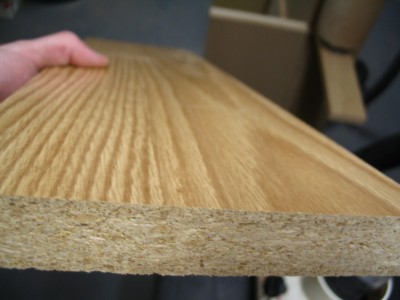
Is it veneered?
If you see a large panel that has a repeating grain pattern, it may be a veneer. In such cases, a very thin layer of real wood is peeled from a tree and attached to a substrate; sometimes the veneer can be one continuous repeating piece because it is rotary-sliced to shave off the veneer layer as the tree trunk is spun by machines. Assuming it is a real wood veneer with a distinct grain and texture—and not merely a piece of printed plastic—you may still be able to identify the outer veneer wood in question, but you should still realize that is it only a veneer and not a solid piece of wood.
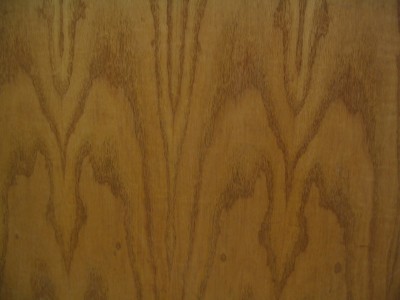
Is it painted or printed to look like wood?
Many times, especially on medium to large-sized flat panels for furniture, a piece of particleboard or MDF is either laminated with a piece of wood-colored plastic, or simply painted to look like wood grain. Many of today’s interior hardwood flooring planks are good examples of these pseudo-wood products: they are essentially a man-made material made of sawdust, glues, resins, and durable plastics.
2. Look at the color.
Some questions to immediately ask yourself:
Is the color of the wood natural, or is it stained?
If there is even a chance that the color isn’t natural, the odds are increased that the entire effort of identifying the wood will be in vain.
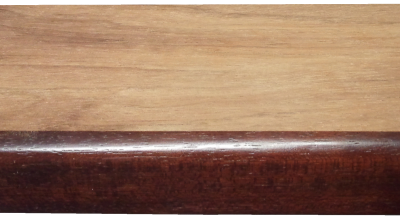
Is it weathered or have a patina?
Many woods, when left outside in the elements, tend to turn a bland gray color. Also, even interior wood also takes on a patina as it ages: some woods get darker, or redder, and some even get lighter or lose their color; but for the most part, wood tends to darken with age.
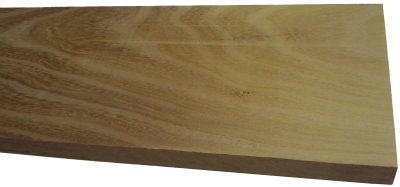
Is it possible to sand or plane the board to see the natural raw color of the wood?
The most predictable baseline to use when identifying wood is in a freshly sanded state. This eliminates the chances of a stain or natural aging skewing the color diagnosis of the wood.
3. Observe the wood grain.
If the wood is unfinished, then look at the texture of the grain. Ask yourself these questions:
Does the wood have an open, porous texture?
Most softwoods will be almost perfectly smooth with no grain indentations, while many common hardwoods have an open pore structure, such as oak or mahogany; though there are some hardwoods that are also smooth to the touch, such as maple.
Can you tell if the wood is quartersawn or plainsawn?
By observing the grain patterns, many times you can tell how the board was cut from the tree. Some wood species have dramatically different grain patterns from plainsawn to quartersawn surfaces. For instance, on their quartersawn surfaces, lacewood has large lace patterns, oak has flecks, and maple has the characteristic “butcher block” appearance.
Is there any figure or unusual characteristics, such as sapwood, curly or wild grain, burl/knots, etc.?
Some species of wood have figure that is much more common than in other species: for example, curly figure is fairly common in soft maple, and the curls are usually well-pronounced and close together. Yet when birch or cherry has a curly grain, it is more often much less pronounced, and the curls are spaced farther apart.
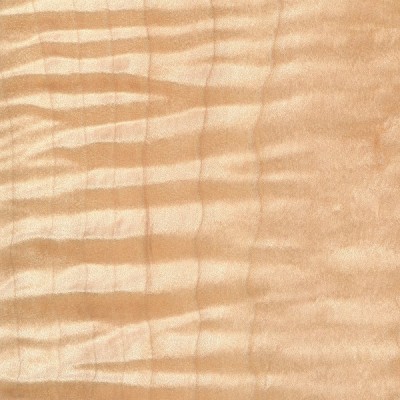
4. Consider the weight and hardness of the wood.
If it’s possible, pick the piece of wood up and get a sense of its weight, and compare it to other known wood species. Try gouging the edge with your fingernail to get a sense of its hardness. If you have a scale, you can take measurements of the length, width, and thickness of the wood, and combine them to find the density of the wood. This can be helpful to compare to other density readings found in the database. When examining the wood in question, compare it to other known wood species, and ask yourself these questions:
Is the wood dry?
Wood from freshly felled trees, or wood that has been stored in an extremely humid environment will have very high moisture contents. In some freshly sawn pieces, moisture could account for over half of the wood’s total weight! Likewise, wood that has been stored in extremely dry conditions of less than 25% relative humidity will most likely feel lighter than average.
How does the wood’s weight compare to other species?
Taking into account the size of the board, how does its weight compare to other benchmark woods? Is it heavier than oak? Is it lighter than pine? Look at the weight numbers for a few wood species that are close to yours, and get a ballpark estimate of its weight.
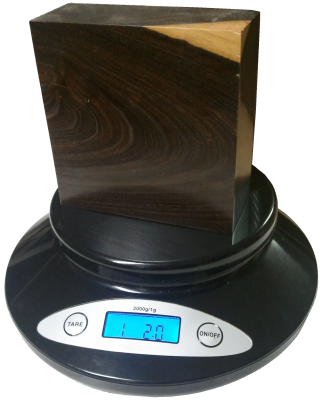
How hard is the wood?
Obviously softwoods will tend to be softer than hardwoods, but try to get a sense of how it compares to other known woods. Density and hardness are closely related, so if the wood is heavy, it will most likely be hard too. If the wood is a part of a finished item that you can’t adequately weigh, you might be able to test the hardness by gouging it in an inconspicuous area. Also, if it is used in a piece of furniture, such as a tabletop, a general idea of its hardness can be assessed by the number and depth of the gouges/dings in the piece given its age and use. A tabletop made of pine will have much deeper dents than a tabletop made of Oak. Additionally, you can always try the “fingernail test” as a rough hardness indicator: find a crisp edge of the wood, and with your fingernail try to push in as hard as you can and see if you’re able to make a dent in the wood.
5. Consider its history.
Many times we forget common sense and logic when attempting to identify wood. If you’ve got a piece of Amish furniture from Pennsylvania, chances are more likely that the wood will be made of something like black walnut or cherry, and not African wenge or jatoba. You might call it “wood profiling,” but sometimes it can pay to be a little prejudiced when it comes to wood identification. Some common-sense questions to ask yourself when trying to identify a piece of wood:
Where did it come from?
Knowing as much as you can about the source of the wood—even the smallest details—can be helpful. If the wood came from a wood pile or a lumber mill where all the pieces were from trees processed locally, then the potential species are immediately limited. If the wood came from a builder of antique furniture, or a boat-builder, or a trim carpenter: each of these occupations will tend to use certain species of woods much more often than others, making a logical guess much simpler.
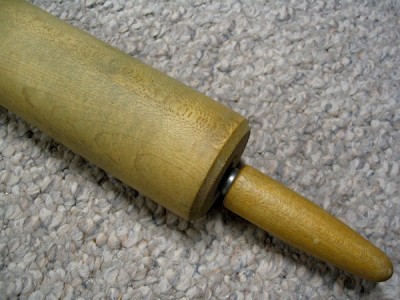
How old is it?
As with the wood’s source, its age will also help in identification purposes. Not only will it help to determine if the wood should have developed a natural patina, but it will also suggest certain species which were more prevalent at different times in history. For instance, many acoustic guitars made before the 1990s have featured Brazilian rosewood backs/sides, yet due to CITES restrictions placed upon that species, East Indian rosewood became a much more common species on newer guitars. (And this is a continuing shift as newer replacements are sought for rosewoods altogether.)
How large is the piece of wood?
Some species of trees are typically very small—some are even considered shrubs—while others get quite large. For instance, if you see a large panel or section of wood that’s entirely black, chances are it’s either painted, dyed, or stained: Gaboon ebony and related species are typically very small and very expensive.
What is the wood’s intended use?
Simply knowing what the wood was intended for—when considered in conjunction with where it came from and how old it is—can give you many clues to help identify it. In some applications, certain wood species are used much more frequently than others, so that you can make an educated guess as to the species of the wood based upon the application where it was used. For instance, in the United States: many older houses with solid hardwood floors have commonly used either red oak or hard maple; many antique furniture pieces have featured quartersawn white oak; many violins have spruce tops; many closet items used aromatic red cedar, and so forth. While it’s not a 100% guarantee, “profiling” the wood in question will help reduce the number of possible suspects, and aid in deducing the correct species.
6. Find the X-Factor.
Sometimes, after all the normal characteristics of a sample have been considered, the identity of the wood in question is still not apparent. In these instances—particularly in situations where a sample has been narrowed down to only a few possible remaining choices—it’s sometimes helpful to bring in specialized tests and other narrower means of identification.
The following techniques and recommendations don’t necessarily have a wide application in initially sorting out wood species and eliminating large swaths of wood species, but will most likely be of use only as a final step in special identification circumstances.
Odor
Believe it or not, freshly machined wood can have a very identifiable scent. When your eyes and hands can’t quite get a definitive answer, sometimes your nose can. Assuming there is no stain, finish, or preservative on or in the wood, quickly sand, saw, or otherwise machine a section of the wood in question, and take a whiff of the aroma.
Although new scents can be very difficult to express in words, many times the scent of an unknown wood may be similar to other known scents. For instance, rosewoods (Dalbergia spp.) are so named for their characteristic odor that is reminiscent of roses. Although difficult to directly communicate, with enough firsthand experience scents can become a memorable and powerful means of wood identification.
Fluorescence
While certain woods can appear basically identical to one another under normal lighting conditions, when exposed to certain wavelengths—such as those found in blacklights—the wood will absorb and emit light in a different (visible) wavelength. This phenomenon is known as fluorescence, and certain woods can be distinguished by the presence or absence of their fluorescent qualities. See the article Fluorescence: A Secret Weapon in Wood Identification for more information.
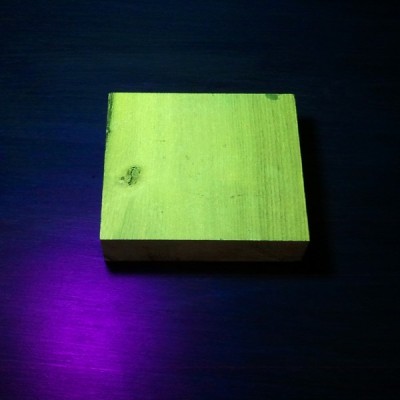
Chemical Testing
There are only a small number of chemical tests regularly used on wood, most of which are very specialized and were developed to help distinguish easily confused species with one another. They work by detecting differences in the composition of heartwood extractives. A chemical substance (called a reagent) is usually dissolved in water and applied to the wood surface: the surface is then observed for any type of chemical reaction (and accompanying color change) that may occur. Two of the most useful are the tests that are meant to separate Red and White Oak, and Red and Hard Maple.
Heartwood Extractives Leachability
Sometimes a wood species will have heartwood extractives that will be readily leachable in water and capable of conspicuously tinting a solution of water a specific color. For instance, the heartwood extractives contained in osage orange (Maclura pomifera) contain a yellowish-brown dye that is soluble in water. (This can sometimes be observed anecdotally when the wood is glued with a water-based adhesive: the glue’s squeeze-out is an unusually vibrant yellow.)
In a simple water extract color test, wood shavings are mixed with water in a vial, test tube, or other suitably small container, and the color of the water is observed after a few minutes. If the heartwood extractives are leachable by water, then a corresponding color change should quickly occur.
In addition to osage orange (Maclura pomifera), merbau (Intsia spp.), and rengas (Gluta spp. and Melanorrhoea spp.) are also noted for their readily leachable heartwood extractives. Because this property is quite uncommon, it can serve to quickly differentiate these woods from other lookalikes.
7. Look at the endgrain.
Perhaps no other technique for accurate identification of wood is as helpful and conclusive as the magnified examination of the endgrain. Frequently, it brings the identification process from a mostly intuitive, unscientific process into a predictable, repeatable, and reliable procedure.
Looking at the endgrain with a magnifier shouldn’t be a mystifying or esoteric art. In many cases, it’s nearly as simple as examining small newsprint under a magnifying glass. There are three components necessary to reap the full benefits contained in the endgrain:
I. A prepared surface.
When working with wood in most capacities, it becomes quickly apparent that endgrain surfaces are not nearly as cooperative or as easily worked as face grain surfaces. However, in this case, it is absolutely critical that a clear and refined endgrain surface is obtained.
For a quick glance of a softwood sample, a very sharp knife or razor blade can be used to take a fresh slice from the endgrain. However, in many denser species, especially in tropical hardwoods, one of the best ways to obtain a clear endgrain view is through diligent sanding. It’s usually best to begin with a relatively smooth saw cut (as from a fine-toothed miter saw blade) and proceed through the grits, starting at around 100, and working up to at least 220 or 320 grit, preferably higher for the cleanest view.
II. The right magnifier.
It need not be expensive, but whatever tool is used to view the endgrain should have adequate magnifying power. In most instances, 10x magnification is ideal, however, anything within the range of 8 to 15x magnification should be suitable for endgrain viewing. (Standard magnifying glasses are typically in the range of 2 to 4x magnification.)
These stronger magnifiers, sometimes called loupes, usually have a smaller viewing area than standard magnifying glasses. Fancier models—with built in lights, or larger viewing surfaces—are available at a premium; but the most basic models are usually only a few dollars.
III. A trained eye.
The third element that constitutes a proper endgrain examination is simply knowing what to look for. In analyzing the patterns, colors, shapes, and spacing of the various anatomical features, there is a veritable storehouse of information within the endgrain—all waiting to be unlocked. Yet, if these elements have not been pointed out and learned, the array of features will simply seem like an unintelligible jumble. The discipline of recognizing anatomical endgrain features is not easily summed up in a few sentences or even a few paragraphs, but it is nonetheless critical to the identification process. To this end, an in-depth look should be given to the various categories, divisions, and elements that constitute endgrain wood identification on the macroscopic level. (In this regard, macroscopic denotes what can be seen with a low-powered, 10x hand lens—without the aid of a microscope—rather than simply what can be seen with the naked eye.) Because the anatomy between softwoods and hardwoods is so divergent, each will be considered and examined separately:Still stumped?
If you have a mysterious piece of wood that you’d like identified, you’ve got a few options for next steps:USDA’s Forest Products Laboratory
You can mail your physical wood samples to the Center for Wood Anatomy Research.
Pros:
- Free
- Professional wood identification
Cons:
- Only available to US citizens
- Slow turnaround times (up to a month or more)
- Limited to three IDs per year
See their Wood ID Factsheet for more info.
Alden Identification Service
You can mail your physical wood samples (even small sections taken from antiques) to Alden Identification Service.
Pros:
- Professional wood identification
- Faster turnaround times (ranging from a few days to a week or two)
Cons:
- Paid service
See their ordering page for more info. (Note that Harry Alden has written several books while at USDA, including both Hardwoods and Softwoods of North America.)
Ask for help online
If the wood ID is merely a curiosity, or non-critical, you can post pictures of the wood in question.
Pros:
- Free
- No need to send physical samples
Cons:
- Greatly limited by the quality of the pictures provided
- Extra work usually required to get adequate clarity in photos
See article of Common US Hardwoods to help find the most commonly used woods.
Get the hard copy
 If you’re interested in getting all that makes The Wood Database unique distilled into a single, real-world resource, there’s the book that’s based on the website—the Amazon.com best-seller, WOOD! Identifying and Using Hundreds of Woods Worldwide. It contains many of the most popular articles found on this website, as well as hundreds of wood profiles—laid out with the same clarity and convenience of the website—packaged in a shop-friendly hardcover book.
If you’re interested in getting all that makes The Wood Database unique distilled into a single, real-world resource, there’s the book that’s based on the website—the Amazon.com best-seller, WOOD! Identifying and Using Hundreds of Woods Worldwide. It contains many of the most popular articles found on this website, as well as hundreds of wood profiles—laid out with the same clarity and convenience of the website—packaged in a shop-friendly hardcover book. 





Why I will no longer be replying to every wood ID request I’ve replied to literally thousands of wood ID requests on this site over the past 13+ years, but as the site’s popularity has grown, so has the time demands for ID on a daily basis. (Contrary to what some may seem to think, I am not some all-knowing wood wizard that can instantly ID your wood. It can actually take me a long time to sift through a lot of different resources.) Over the past few years, my backlog of pending wood species to be added to the… Read more »
Hey Eric! Can you help me identify this wood? Old coffee table from my great aunt who lived in Canada most of her life. Very heavy wood. Thanks!
Cant’ tell, sorry. Also, it appears to be veneered, so weight should be irrelevant since it is only of the underlying substrate and not of the wood veneer in question.
What kind of wood would this be? I have no idea, if anyone could help, would greatly appreciated.
It’s very hard to tell for sure from pics, but I do see large aggregate rays, which would suggest oak. White oak (and English oak) were used in antiques more commonly than red oak.
Thank you!
These are stairs I’ve sanded. Can you tell me what type of wood this is?
Most likely oak.
Some doors I pulled out of a house built in 1910, fingernails got me at a hard press to get an indent, thought maybe hemlock but im still not sure.
I can’t tell from the pictures, other than that it is a softwood. For softwoods, you really need to get a very, very clear closeup look at the endgrain to check for resin canals. https://www.wood-database.com/wood-articles/softwood-anatomy/
Any help on this? This is our front door that we just recently stripped. I assumed it was oak, but I’m not sure.
Not oak. It looks like old growth softwood of some sort. But really nice stuff as the growth rings are vertical (quartersawn) and very close together, indicative of older trees. Possibly Douglas fir or another softwood like pine.
I would like your opinion on what type of wood this is.
pine
I’d just like to know,what kind it appears to be?
I inherited this wood. It’s a pretty consistent light to medium brown but then has these dark streaks in it. Any ideas?
Can you finely sand the end and face grain, and post closer pictures of just one of the pieces? I can’t tell from that distance.
Eric, this is an old desk. Any ideas?
At the very least, I’d say that the grain is mahogany-like. https://www.wood-database.com/wood-articles/mahogany-mixups-the-lowdown/
Hi! We’re remodeling and would like to match this flooring. Do you know what it is? It’s 31/4 inches wide. Would it help to know our 100 year old cottage is on an island in Maine. History of boat building.
Please attach pics.
Guys at work say this is Teak. I’m not convinced. If you notice the white in the grain, can anyone verify whether this is resultant of pain that was on the floor before sanding or if it is just the natural grain? Regardless of sandpaper grade on belt sander the white remains.
Hmm, interesting, but hard to say much conclusively. It does appear that those white streaks are heartwood deposits–basically they’re a natural part of the wood, though not always or consistently present. Teak is known to have such white streaks, but I’ve never seen them that prevalent before. Best to get a look at the endgrain to be sure. Does the smell resemble teak?
Hi Eric, what do you think this wood is? I think it is alder, but I’m not sure.
Any ideas would be great thank you
Yes, alder does seem like the most likely choice. The color looks a bit pale, but you can see in the lower left third of the image what appears to be a few aggregate rays (appearing as small thin brown streaks) which are characteristic of alder.
Hi there thanks heaps for the guide,very informative however im still stumped :P
I have been given what i think is a old wooden, liquor cabinet. It has a very strong smell when the doors are opened!
I was hoping you might be able to help me work out what type of wood it may be?
As a side note im located in New Zealand and did wonder if it could potentially be a native NZ wood, maybe kauri, rimu etc ?
Cheers :)
I’d guess it is a species native to NZ or Australia. Maybe someone from the region can help out, I can’t tell from the pictures.
Extracted these from Lake Superior as piles. They were driven into clay in 1902. Having a hard time identifying these. Seem like Pine and Poplar. Have a ton of pictures if anyone wants to help me out!
Please attach pics as they did not come through.
Customer says this is Osage Orange, but when I compared it some known Osage in the shop, it was a completely different color. Had a somewhat sweet scent when grinding, and it was not hard to work with. Definitely not Osage, not sure what it is though.
The end grain of the same piece of firewood
The endgrain looks oak-like. Not sure what’s in NZ, but the very large aggregate rays and ring porous arrangement are, at the very least, oak-like.
A piece of firewood that I’ve split and planed up a bit. Hardwood. Grown in New Zealand, but that’s hardly a help as everything seems to grow well here
I’m trying to figure out what material our kitchen and bathroom floor is (hardwood, softwood or bamboo…) and if we can refinish it…ie. sand it down and stain it. Hope the pictures are helpful and thanks in advance:)
Looks like a light colored wood, probably maple, or possibly birch. Appears to be solid wood, but you might want to double check end of board (maybe near opening for toilet drain) to make sure it’s solid. Should be able to sand it down and refinish it, though it can be tricky to stain maple evenly.
This bench has Dinaire furniture maker (discovered on web they made oak dining sets 1940’s.) this bench is part of a dining set. The table has a light Formica top but the wood is the same and carved in same style. Maybe white oak? It was easy to sand off what remained of a poly topcoat. Some of the wood has a pink hue. Thanks!
Yes, definitely oak. It’s hard to tell from the pictures, but from the little bit of the rays that I can make out (they look fairly short), I’m leaning more toward red oak.
Hi guys
been restoring an old guitar, I’ve sanded the finish off, I was expecting maple, not sure what this is, any ideas?
Are you sure the top is solid? To me, it looks like you are sanding through the top ply of some plywood.
It’s definitely solid, I was expecting a laminate, but it’s one piece of wood, these are the best pictures I can get, I’ve tried not to sand too hard into it as it’s only maybe 8th inch thick. I’m just curious as to what it is, I was expecting it to be maple, the neck is one piece mahogany, but the body looks to me like it could be something like pine
Can you tell me what you think this wood is?
Hi!
I recently bought a table and chairs and the wood has me stumped.
It is dark reddy brown with black or very dark grain. It is very solid and smooth, but I think the tabletop has had a stain or something over it? The tops of the chairs are also much lighter than the rest of the wood. (4th picture)
Can you tell what sort of wood it might be?
I can’t tell from the pictures, but superficially the grain resembles mahogany. https://www.wood-database.com/wood-articles/mahogany-mixups-the-lowdown/
two more pics -tried to get the grain image
Got this wood from an auction in Wisconsin. It seems softer than Cherry. Reddish without a stain , still can’t quite identify- take a look- have any ideas?
I can’t see much detail in these pictures. Are they of the side of the board? Best to get a picture of the face grain and the end grain. Also, the surface is pretty rough so I can’t see much of the grain without sanding.
I have recently purchased a vintage chest of drawers, can someone tell me what type of wood its made of please?
Looks like some old antique style oak.
Is this real wood and can it be stained?
No, it looks like a mandmade material called “hardboard.”
In general how common is it for trees to cross breed in the wild? And sorry for asking but how do you give yourself a profile picture I’m not that tech savvy?
Recently moved into a house with wood paneling on the ceilings and walls. Wondering what type of wood it is. The house was built in 1962 and is located in Marin, California. Thanks!
My best guess based on single picture is western red cedar. That wood is quite soft though, so you may want to see if it can be dented or gouged with relative ease. Either way, it appears to be a type of softwood.
Thank you!
i just moved in this 15 yr. old home. inside the cabinets have a wood like odor that gives me a headache. can you tell what kind of wood they are? thanks!
Do you have any pictures?
Wondering what kind of wood this table is made from. Boards are about 15 inches wide. I have been told the wood is from 1860 +/-,possibly from Canada. Beautiful character n this wood!
Hi Eric; from France: I stumbled upon two massive hand carved hatchets in a flea market some times ago; sizes are 16″x4″ and 15″x 5″; density is 1,4, color a darkish brown close to pau ferro. the grain is ultra tight. no idea of what place on the earth it comes from; (pacific?) could you help me to sort what kind of wood it is made of?
Pictures?
Thank you for your reply. I sent 10 of them, but it does not seem to work; I will try again with only four.
When you say that the density is “1,4” I am assuming that is dried specific gravity, aka ~1400 kg/m3? To be honest, if that is the case, based on weight and also grain, it could very well be genuine lignum vitae.
I dipped it into water to obtain the weight of its water volume, then I weighed the dry object by itself, and obtained a density of roughly 1,4. it is a very hard wood; these carvings should be “tourist orientated”, but the amount of hand work is amazing: there is no evidence of electric tooling and the finish is as smooth as an angel’s butt.
thank you for your blog and for the kind expertise.
all the best from a frog eater; take care!.
I just fine tuned the density: 1,30 and 1,33; makes more sense. I thought that Gaïac was more of a grey hue than reddish-brown, but with these caracteristics it surely is lignum vitae.
four other pictures. the top end of the handle has been sanded to 1200 grit metal paper.
I had applied linseed oil before taking the last picture I posted, so here are a couple 4x magnified views of the raw endgrain sanded to 600 grit.
Looks like a fruitwood of some sort, possibly in the Prunus genus. Is there a scent to the wood, sometimes that helps to get a better idea of possible species of fruitwoods.
I’m almost positive this is teak, just wondering what kind/quality of teak as I am looking at selling it.
The patterns on top suggest a veneer, so it may not be solid teak. But what is visible on top appears to be all heartwood, so highest grade (which I would expect from a veneer).
Wondering about this wood…
It kind of smells like cedar or something when we sand it
The pattern looks to be bookmatched veneer, which gives it a unique pattern. But to me it looks most like quartersawn white oak with the ray fleck.
Trying to identify the wood species please
Possibly mahogany? Would need to see endgrain to get a better idea.
https://www.wood-database.com/wood-articles/mahogany-mixups-the-lowdown/
This has me stumped…no pun intended, but I’ll leave it…
Very hard wood!
Can you help me identify this wood? This is the best picture I can get of the grain, as well as the end grain. When you cut it or sand it, it has a really sweet, woody smell, unlike anything else I’ve worked with so far. I have an inkling it’s some type of cedar but I’m really not sure. This is a planed-down, sanded-down beam I found at an old barn. I’m near Atlanta, Georgia.
I would agree some type of cedar. Based on your location and color of the wood, one candidate could be Chamaecyparis thyoides, Atlantic white cedar. Or it could be a species of cypress.
I’m trying to figure this wood out so we can sand and stain this bed. Could you help me? Thank you!
Looks like oak
Hello Eric-
I was given this piece of wood from a friend who was using reclaimed wood from an old house for a new mantle. Do you have any idea what this wood could be and what type of cut was made to acquire it from the tree based on a grain pattern?
Thank you so much!
Appears to be quartersawn old growth softwood, probably a species of yellow pine.
Hi, i have here a 20 year old furniture, i think it is some kind of pine, but i don’t know, i am not an expert in this things. Is it possible to identify them on the pictures ?
Yes, most I can tell from the pictures is it’s a type of softwood. To get a better idea with softwoods, you really need a high quality, well sanded, closeup shot of the endgrain to check for resin canals.
Eric, Just trying to figure out what this is. Got it from a friend, who got it from a friend, who got it from a friend, and so on.
The dark is redder than it appears and the light is grayish, and the yellow is glue. It feels like a dense solid wood.
Thanks,
Brandon
Can’t tell for sure, but the grain and color remind me of chechen.
Thanks, I appreciate your help. Here’s some closer shots. What do you think?
I’d still say chechen is most likely guess. You may consider picking up a blacklight at local big box hardware store and checking for fluorescence: https://www.wood-database.com/wood-articles/fluorescence-a-secret-weapon-in-wood-identification/
Thanks again, Eric. I have another piece and once I plane it down I’ll send those pics too.
Hi Eric, can you identify this wood? i know it is at least 15 years old. thanks
Can’t tell. That’s a very rough exterior, and appears to be stained too.
Hi Eric, can you identify this piece of live edge wood? I believe the two shorter pieces are walnut but I’m not sure about the tall light piece! Thanks!
Possibly butternut or ash? I would need to see a close up picture of the endgrain to get more info.
Hey Eric can you identify what kind of wood this is?
It appears to be an old growth, quartersawn softwood species, though I can’t say for sure which one. Possibly pine.
Eric, can you please help identify this wood. It’s a mantel from an old house in south Louisiana.
Your pictures are not coming through. Please try to reattach images again.
Trying another picture
nothing sorry
Eric, I finally got a picture to go through! That’s the old mantel from Louisiana. I don’t know if it’s cherry, pecan, pine? Hopefully you can help!
Yes, it’s a softwood. Possibly pine.
There is another!
Acquired a project table that’s passed through a couple hands before me and am unsure of the two pics. The outer ring of veneer is unfamiliar as is the solid piece.
There’s really no way to be 100% certain on veneer ID of a tropical wood like this. The outer ring looks rosewood-like, but perhaps not a true rosewood. Reminds me of pau ferro, aka Bolivian “rosewood” — but there’s no way to know for sure. Solid piece could be a very basic wood like yellow poplar as it’s just serving as the substrate for the veneer.
Hello! I need some help identifying what type of wood this is… My kitten flooded an area so I’m trying to find the correct type to replace. Thank you!
It doesn’t appear to be a natural wood color (i.e., stained) so I can’t tell from the picture, sorry. I think the hardest part would be to match the grain itself, as the growth rings look to be very close together on those pieces. You could try to find another wood (maybe oak) and then just use a stain to try and match the color as best you can.
Any chance you could help me identify this?
Those are some very, very large pores. To me it looks like tornillo. https://www.wood-database.com/tornillo/
Thank you very much for the information, that particular piece has been tricky for me to identify.
Hi,
Can someone help me identify the wood of this floor? It was sanded and coated with polyurethane but I believe that is the natural color. Appreciate any input.
Thanks
Red oak
Hello, could anyone tell me what wood type this is please?
Looks like white oak to me.